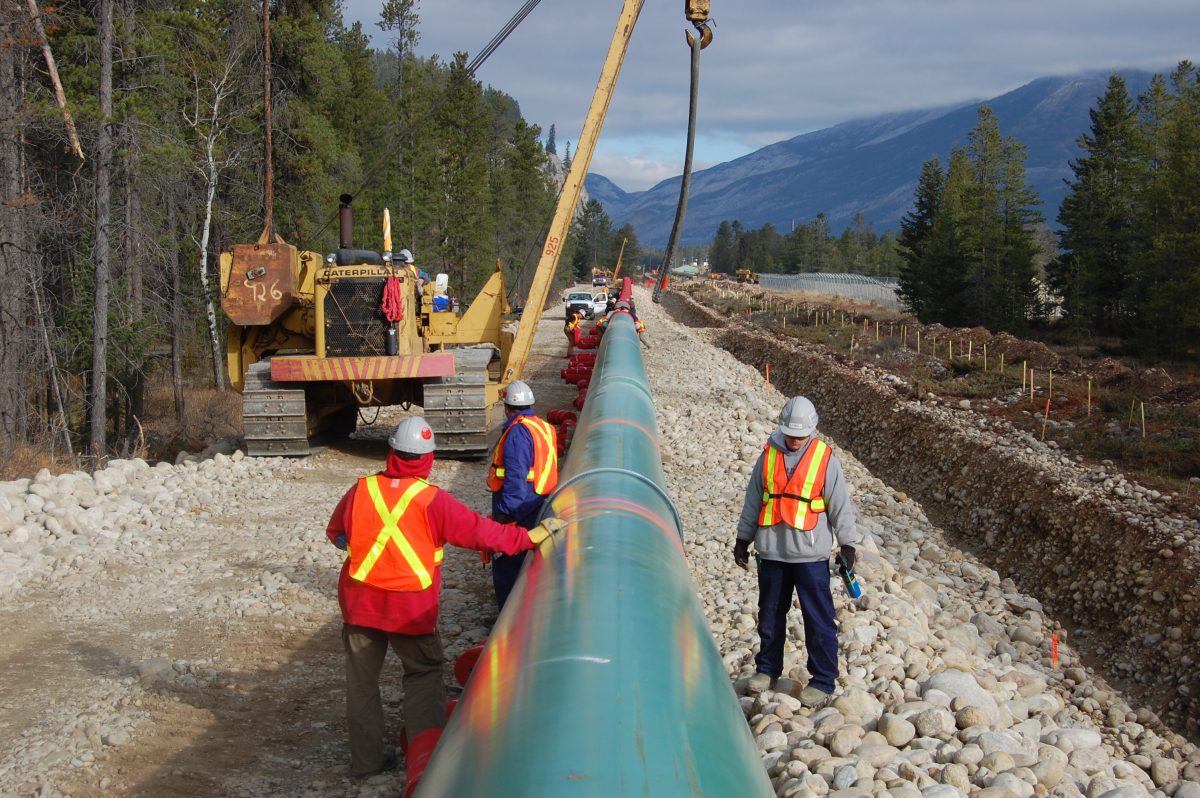Support strong Canadian climate journalism for 2025
The Canadian government is funneling nearly three times more financial support to fossil fuels than renewables, says a new report that blames wealthy nations for slowing the global energy transition by continuing to subsidize oil and gas.
Canada spent 0.16 per cent of its gross domestic product (GDP) on fossil fuel subsidies compared to 0.06 per cent on support for renewable power on average between 2020 and 2023, the International Institute for Sustainable Development (IISD), a think tank, revealed in its study.
The IISD’s calculations were based on data from the International Monetary Fund (IMF), which counts 190 nations including the rich G7 countries among its membership.
The latest IMF numbers indicate Canadian subsidies for fossil fuels dropped year-over-year from $4.4 billion to $1.5 billion during the period, while support for renewables leaped from $896 million to $3.3 billion.
But IISD analyst Nhat Do said it was misleading to think that Canada was making great strides in shifting funding away from oil and gas while the country’s spending on its energy transition is actually trailing behind other industrialized nations.
"Canada is trending in the right direction, using more public money to roll out renewables and less to prop up fossil fuel sectors, but it is too early to celebrate," said Do, who co-authored the report.
"As a share of GDP, Canada's support for renewables lags behind China and Brazil, as well as other rich countries.”
Canadian energy transition inconvenient truths
Do warned the 2023 IMF figures hid inconvenient truths, as the fossil fuel subsidy data had "yet to be finalized" by the Organisation for Economic Cooperation and Development, which double-checks IMF numbers, and the renewables support was accrued over three years but only counted-in after being added to the federal budget last year.
"The government can and should do more to accelerate the clean energy transition, in light of the global goal to triple renewable capacity by 2030,” Do said, referring to a net-zero emissions target set by the International Energy Agency (IEA) in 2021.
Do also cautioned that the $18.8 billion in federal subsidies earmarked for the $30 billion Trans Mountain Pipeline over its operational lifetime appears not to have been factored into the latest iteration of the IMF data.
Global subsidies for the fossil fuel industry totaled US$535 billion in 2023, while support for renewables crested at US$168 billion, according to the IISD report, the first to track public financial support from G20 governments for renewable power, grids and storage.
About 95 percent of global renewables support over the past four years has come from wealthy countries and China.
The European Union spent US$340 billion on renewables over the 2020–23 period, led by Germany injecting 1.04 per cent of its GDP into the sector. The United States spent US$140 billion, and China US$119 billion, over the same period.
The IEA estimates that to meet a global goal to triple renewable energy capacity by 2030 — and keep alive the Paris climate agreement emissions targets — global renewables investment needs to double from current levels of around $1.1 trillion a year.
"Assuming the relationship between public and private investment remains consistent, G20 governments may need to double their financial support to facilitate this," Do said of reaching the IEA goal.
"Strategic policy interventions" needed
Government will be fundamental to achieving this ambition, by driving forward policies that back renewables, the IISD report stated.
“Tipping points theory tells us that governments can speed up the energy transition through strategic policy interventions,” IISD policy analyst and report co-author Indira Urazova said.
Higher public financial support could remove barriers to deploying renewables such as high borrowing costs, energy storage and potential bottlenecks when adding clean energy to a grid, Do said.
Strategic government support for renewables is "good value for taxpayers: it delivers cheap, safe, clean energy and reduces exposure to geopolitical risk," the IISD report said.
Among G20 nations last year, one dollar of public support for renewables translated into six dollars of investment, according to IISD calculations. By comparison three dollars of government subsidies for oil, gas and coal created only one additional dollar of investment.
Despite rapid progress in some countries, deployment of renewables remains slow in most of the developing world. “Public financial support will be crucial to accelerate the transition worldwide,” Urazova added.
Closing the subsidy gap
To close the investment gap for renewables, the report suggested several actions governments can take now:
- Align national targets for deploying renewals with the IEA goal to triple capacity by 2030. Each country submits an implementation plan to the United Nations for the next round of national climate plans due in early 2025.
- Eliminate fossil fuel subsidies "in a socially responsible way" — the IISD provided no details on what this would entail.
- Funnel aid and international public finance to support renewable energy in lower-income countries, including through the new climate finance goal to be negotiated at this year’s COP 29 climate conference.
The IISD recently called out Canada as a "climate hypocrite" for claiming international energy transition leadership while at the same time stepping up the award of oil and gas drilling permits to levels not seen since 2017.
The think tank groups Canada with other industrialized nations as a “high capacity, low dependency” country with large hydrocarbon reserves and the “financial means, the technology, [and] the diversified economy that puts the onus on it to really lead the way in the transition."
Despite net-zero promises, the United States, United Kingdom, Norway and Australia, and Canada this year granted oil and gas licenses that could release 12 billion tonnes of CO2 into the atmosphere if “fully exploited."






Comments
Our "climate-sincere" Liberals in action.
Under the Liberals, Canada's O&G industry is reaping record profits on record production.
With enemies like these, who needs friends?
With friends like these, who needs enemies?
What am I missing here? "The latest IMF numbers indicate Canadian subsidies for fossil fuels dropped year-over-year from $4.4 billion to $1.5 billion during the period, while support for renewables leaped from $896 million to $3.3 billion." This means Canada is spending twice as much on renewables as on fossil fuels, not what the heading says. Did your headline writer read the article? Why do the two sets of numbers contradict each other?
I think we need the numbers for year 2 to figure this out. For example, it could be that fossil fuel subsidies were 4.4 billion, maybe 4.0 billion and then 1.5 billion.